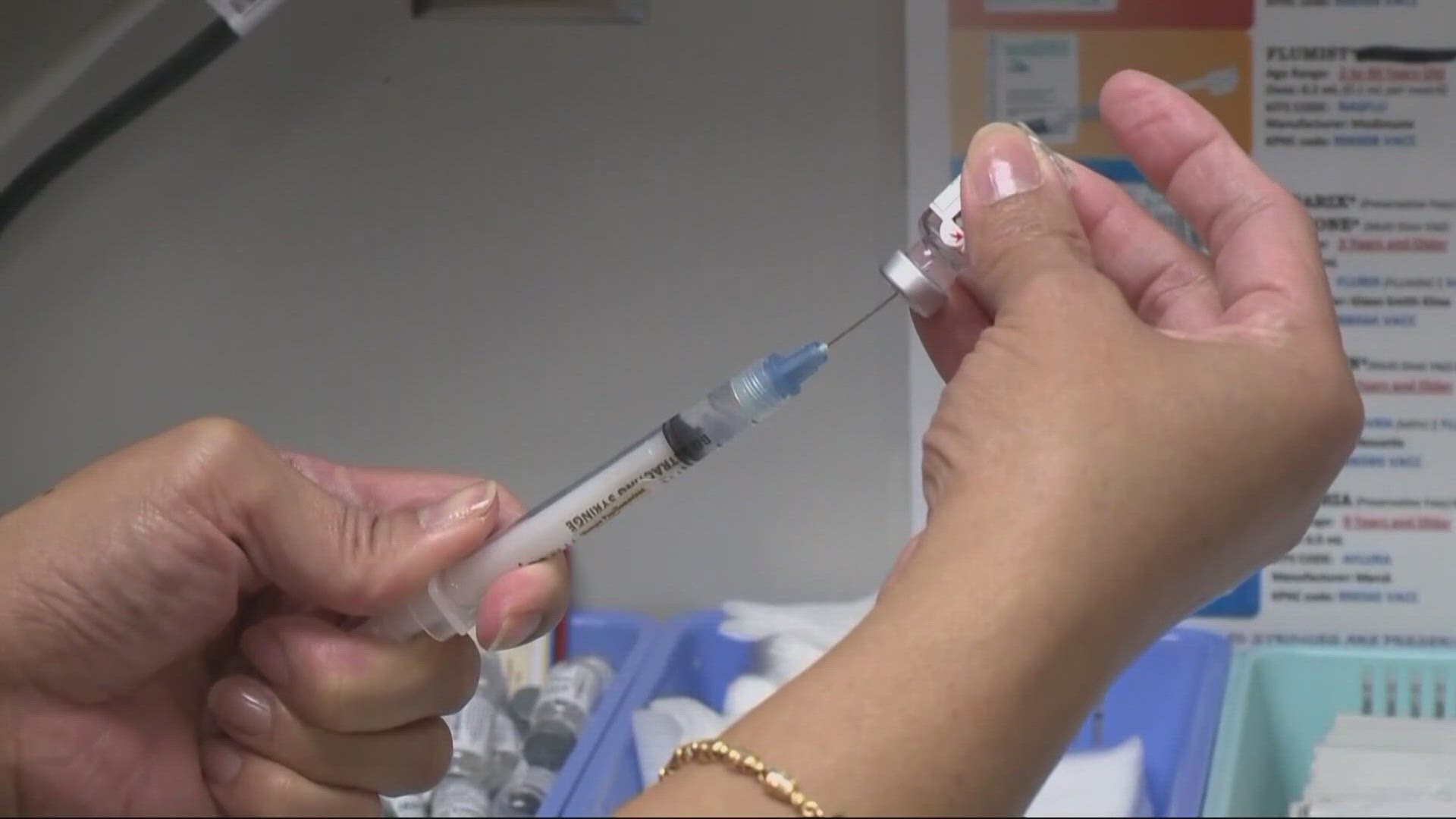Parents, teachers and school superintendents will find out in early June how schools are expected to function this fall after months of being closed.
Colt Gill, director of the Oregon Department of Education, said in an interview that the state expects school buildings to reopen in September.
He said his agency, working with the Oregon Health Authority, will announce soon what the conditions will be for school in the fall.
“We’re working really hard to ensure that school next year is going to be a safe place to be,” Gill said.
Public schools closed on March 13 and are finishing the 2019-2020 school year with students never returning to their classrooms. Teachers instead worked with students remotely, relying on videos, emails and phone calls.
The unprecedented finish to the school year came as Gov. Kate Brown applied orders across the state to contain the coronavirus.
Gill said he expects schools can open in a “vast majority of Oregon communities” but said schools will have to live with new rules and restrictions. Some school systems may be required to resort to distance learning because of continuing high levels of infections in the community.
He said that schools that do open may have to teach students with a blend of in-class instruction and distance learning from home. That will depend on how many students can be safely allowed in one class, Gill said.
He said the state’s schools and the Education Department face one challenge atop another to ready for the new school year.
Gill said he formed a “pretty significantly large team” at the state agency to plan and in recent days has had “deep engagement” with school superintendents, teachers and parents to devise the opening.
He said superintendents across Oregon are “interested in having their students back at school and be able to ensure that they can overcome any type of learning loss that has happened.”
Gill cautioned that because circumstances with COVID-19 can change rapidly, plans announced in June could have to be modified even before schools open.
“We’re going to be living with this disease,” Gill said. “Whenever we loosen restrictions, we increase some risk that people will pick up the illness.”
Jim Green, executive director of the Oregon School Boards Association, said schools want freedom to devise their own solutions to meet broad state requirements rather than having each school practice set by state officials.
Nikki Albisu, superintendent of the Ontario School District, is one who wants a level of independence.
“They need to plan not with Portland in mind but with everybody in mind. Not one size fits all,” Albisu said.
Gill said he intends to allow for such “local flexibility.”
Once the state settles on how schools will function, superintendents and teachers have about 90 days to be ready to teach again.
Green said the complexity involved is “exceedingly challenging.” He said the quick switch in the spring to distance learning has been a challenge for educators.
“Reopening our schools is twice that, if not more,” Green said. “Schools will not look in the 2020-2021 school year like they ever have before.”
“There’s just so much,” Albisu said. “It forces us into a plan A and a plan B and kind of a plan C.”
Mark Redmond, superintendent of the Malheur Education Service District, said he is already planning to have another round of training for his staff, taking away time otherwise spent preparing for school in the fall.
School leaders said Oregon schools face considerable uncertainty.
One issue is staffing. While children have been less affected by the disease, vulnerable adults have been encouraged by health authorities to keep relatively isolated. That includes older adults and those with compromised health.
Green noted that 35% of the state’s school employees are eligible to retire. That means some educators and employees who cook meals and drive buses may stay away from their jobs for now.
“We still have to figure out how we’re going to staff school,” Green said.
Redmond said staffing is a “huge concern.”
He said he’s worried about protecting vulnerable employees who “may not be able to work directly with students.”
That could, in turn, require more substitute teachers than typical, driving up school costs.
Albisu is surveying her staff to find out who is comfortable returning to the school buildings.
“We have a lot of adults in the at-risk category,” Albisu said. “What’s the plan if we can’t get them back on the job?”
Green said there could be a blend of teaching, with some teachers handling in-school classes while others provide distance learning.
Redmond said schools will have to prepare for that blend of teaching, reacting quickly to any change in infection levels in the community.
“We’re going to have to be able to fluctuate,” Redmond said. “We’ll have to pivot very quickly.”
Busing is another uncertainty, Green said.
Current social distancing requirements - keeping people six feet apart – would mean that students would sit only one per seat and in every other seat on a school bus.
“School buses are not meant to have one kid every other seat,” Green said.
Redmond said that if bus capacity is limited, schools may have to split school days into two sessions to allow more bus runs.
“Your busing is going to be twice as much as it used to be” if that becomes necessary, Redmond said.
Green said educators are asking the state to loosen that social distancing standard to ease the strain on school transportation systems. He said another challenge, though, will be that many bus drivers are retirees who are more at risk of the infection. There may be a shortage of drivers in the fall.
That could lead to longer walking distances for students, Green said.
All the planning is underway as school funding remains in question. The state budget is forecast to have billions less in revenue, but the governor hasn’t indicated yet how she proposes to cut state spending to match.
Gill said his agency is advising school districts “to continue to wait” for those spending decisions before adjusting their own budgets.
“We’re all in a wait-and-see mode,” Gill said.
This article was originally published by Malheur Enterprise, one of more than a dozen news organizations throughout the state sharing their coverage of the novel coronavirus outbreak to help inform Oregonians about this evolving health issue.



